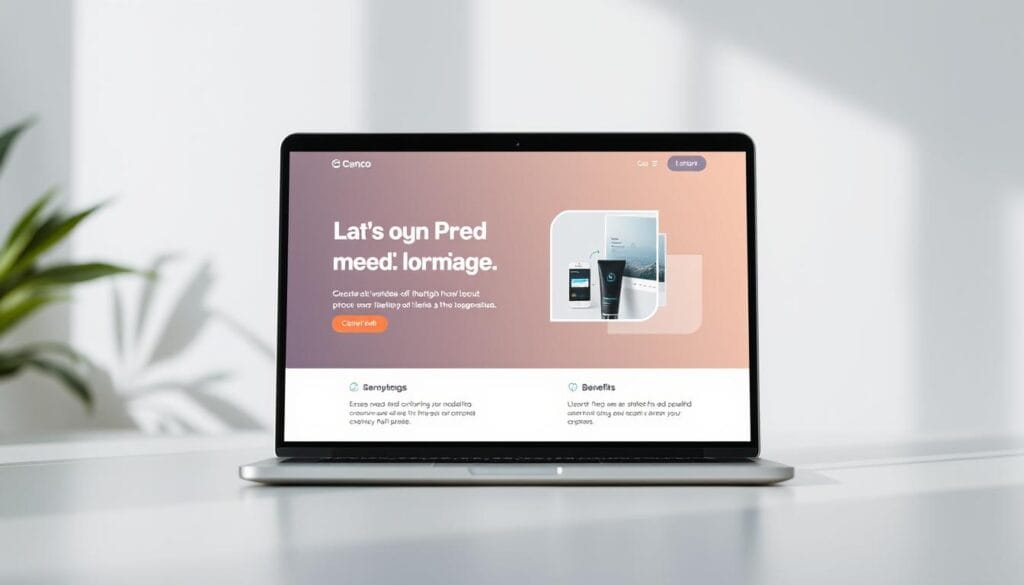89% of search ad traffic doesn’t return to organic channels when ads stop. That one stat alone explains why brands bleed budget when they pause or scale without control.
We see premium brands ramp spend too fast, with weak tracking and flat results. The outcome: wasted budget, fractured data, and stalled growth.
We promise a systematic, ROI-first solution. Our approach aligns business, analytics, execution, and creative to compound return instead of chasing vanity metrics.
Paid ads are not optional — paid visitors convert at far higher rates and drive incremental revenue. Scaling is a discipline: test in controlled cohorts, prove uplift, then expand without crushing MER or ROAS.
Act now. Reserve a consultation or secure a slot for Macro Webber’s Growth Blueprint and stop letting budget bleed while your competitors tighten their hold.
Key Takeaways
- Paid traffic delivers incremental, higher-converting customers; pausing ads often loses that volume.
- Scale with control: validate lifts in cohorts before increasing budgets.
- Focus on revenue, contribution margin, and incrementality over vanity metrics.
- Combine data-backed frameworks with CRO-driven landing pages to protect every click.
- Our Growth Blueprint operationalizes this system for high-ticket brands ready to scale.
The present state of Ecommerce PPC: why scaling ads fails and how to stop the budget bleed
Rising CPCs, signal loss, and blurred attribution are forcing brands to pay more for less control. Auction pressure and broader targeting lift spend but hide falling efficiency. That creates a downward spiral: higher cost per acquisition and weaker defendable results.
We see clear failure patterns. Fixes are practical and immediate. Below are the root causes and the actions we take to stop the bleed.
- Same play, worse auctions: Scaling identical ads into saturated auctions increases CPAs. Action: refine relevance, tighten offers, and split tests before budget ramps.
- Loss of signal: Privacy changes create attribution noise. Action: deploy server-side tracking, reinforce first-party data, and tighten UTM governance.
- Channel overreliance: Pumping one channel drops blended conversion rates. Action: diversify mix and map intent across campaigns.
- Poor creative and landing match: Generic prospecting lowers CTR and conversion rate. Action: enforce message-match and stage-specific pages.
- Feed and search mistakes (example): Scaling Smart Shopping without feed hygiene inflates volume but reduces purchase rate. Action: clean feeds and enrich titles with buyer-intent terms.
Benchmark reality: your website conversion rate caps efficiency. Improve that rate by even 0.5–1.0 points and paid performance compounds.
Our approach: isolate cohorts, protect learnings, and expand in controlled steps. Align channel intent, creative, offer, and landing destination — then scale only what preserves profitable unit economics.
Foundations first: align Business, Analytics, Strategy, and Execution before you scale
We stop scaling on assumptions. First, we set financial outcomes: revenue targets, ROAS floors, contribution margins, and CAC vs. LTV by cohort. Those metrics replace vanity goals and anchor every decision.

Clarify goals that map to revenue, ROAS, and customer acquisition—not just clicks
Translate objectives into constraints: channel ROAS limits, audience saturation caps, daily budget ladders, and a creative refresh cadence. This creates predictable ramps and protects learnings.
Use the Paid Media Cube to plan two-dimensional traffic across search, social, and display
The Paid Media Cube maps channel by buyer stage—awareness, consideration, decision—so traffic volume matches intent. Each cube cell gets a documented play: message, offer, landing, KPI.
Answer the four strategic questions: who, where, how, and what to offer
Who is the audience? Where do we reach them? How will ads be formatted and messaged? What offers convert at each stage?
- Operational controls: server-side tracking, UTM governance, and live dashboards.
- Execution standards: naming conventions, QA checklists, and change logs.
- Guardrails: spend-to-revenue ratios, variance alerts, and experiment backlogs.
Result: a repeatable process that lets us scale ppc with precision, maximize results, and compress risk.
Keyword research and intent mapping for profitable ppc campaigns
Precise keyword architecture separates profitable search from wasted clicks at scale.
We build buyer-intent clusters that route each query to the right ad and page. Use Google Keyword Planner and your account search term reports to validate volume and intent before you bid.
- Cluster by intent: transactional, commercial, informational—map each to distinct ads and landing destinations.
- Prioritize bottom-funnel: start with exact and phrase matches for revenue-driving keywords; expand only after proof.
- Balance volume and CPA: mix head terms with converting long-tail variations based on real account data.
- Match-type engineering: exact for winners, phrase for adjacent demand, broad + audience layers when profitable.
- Negative keywords: compile lists for brand safety (free, cheap, repair), competitor exclusions, and product mismatch to protect spend.
- Feed and titles: enrich Shopping titles with primary keyword signals and attributes for product relevance.
- Operational cadence: weekly harvest of queries, promote winners to exact, add negatives, and timestamp every change.
Result: cleaner traffic, higher quality ads, and a defendable path to scale without wasting budget.
Ecommerce PPC Strategy: channel mix, audience precision, and campaign structure that drives results
Treat channels as instruments: some capture demand, others create it—then orchestrate them.
We assign clear roles. Search captures active intent; social builds awareness and pre-qualifies interest. Display and YouTube amplify reach and deepen remarketing.
Search vs. discovery
On Google, prioritize exact and phrase match for decision-stage queries and optimize Shopping feed titles for high-intent traffic. On Meta, run creative that educates, entertains, and seeds desire.
Segment by buyer stage
Architect campaigns by awareness, consideration, and decision. Feed stage-specific offers: guides for awareness, trials for consideration, and discounts for decision.
| Channel | Primary Role | Key Tactics |
|---|---|---|
| Search | Capture intent | Exact/phrase matches, Shopping with enriched titles |
| Meta / Social | Create demand | Prospecting lookalikes, creative that pre-qualifies |
| Display / YouTube | Amplify & remarket | Audience sequencing, video hooks, frequency caps |
We build precise audiences: lookalikes from high-value customers, retarget by product engagement, and protect decision-stage search budgets. This structure compresses CPA and raises conversion rates, enabling repeatable scale.
Offer and messaging strategy: match the promise to the page and the person
The fastest lift in ROI comes from matching the ad’s promise to the exact landing experience. We design offers that respect intent and remove doubt. That alignment turns clicks into meaningful tests and reliable revenue.
Create stage-specific offers that move people forward without forcing the sale
Awareness: lead with value-first content—guides, quizzes, mini-lessons to qualify people.
Consideration: offer trials, comparisons, or bundles that reduce risk for customers.
Decision: use time-bound incentives, guarantees, or bonus add-ons to finish the sale.
Close the message match loop: ad copy, keywords, and landing pages in sync
Copy must echo the ad verbatim. Keywords become headline hooks. The landing page repeats the offer and proof to remove friction.
- Build 3–5 ad angles per persona: benefit, risk-reversal, scarcity, authority, outcomes.
- Use stage-appropriate proof: UGC for awareness, demos for consideration, guarantees for decision.
- Example: a “Free 7-Day Trial” ad must land on a page with the same headline, CTA, and clear terms.
| Stage | Offer | Proof |
|---|---|---|
| Awareness | Guide / Quiz | Press mentions, UGC |
| Consideration | Trial / Comparison | Ratings, video demos |
| Decision | Time-bound bonus | Guarantee, urgency |
Result: a tight loop of ad, copy, keyword, and landing page that raises conversion and scales ppc without surprise.
High-performance landing pages: turn traffic into revenue, not bounce
A landing page that answers the customer’s question fast protects every dollar spent on ads. We design pages to convert by prioritizing speed, trust, and clear outcomes.

Speed, trust, and clarity: essentials for product and category landing pages
Prioritize load speed. Aim for sub-2.5s Largest Contentful Paint, compress images, defer non‑critical scripts, and use a CDN to preserve paid efficiency.
Build trust instantly: show above-the-fold reviews, security badges, return policy, and visible support to reduce hesitation.
Ad-to-page continuity and CRO elements that lift conversion rate
Match headline, hero visual, and CTA to the ad copy so intent stays intact when visitors land. Keep the primary message in the first viewport.
“We treat the page like a funnel gate—small frictions cost real revenue.”
- Clarify value with benefit bullets and comparison tables for fast decisions.
- Reduce friction: guest checkout, one-click wallets, and minimized forms; display total price early.
- Use dynamic elements where authentic: inventory counts, ZIP-based delivery dates, and real offers.
| Priority | Metric | Action |
|---|---|---|
| Speed | Sub-2.5s LCP | Compress images, CDN, defer scripts |
| Trust | Above‑fold proof | Reviews, badges, returns |
| CRO | Conversion rates uplift | Test headlines, CTAs, pricing |
We maintain a CRO backlog that ties tests to conversion targets and uses site analytics to prioritize fixes that compound performance over time.
Retargeting that recovers the 95%: build your matrix for recency, segments, and hooks
Recovering lost buyers requires a surgical retargeting matrix, not spray-and-pray ads. We map behavior, recency, frequency, and creative so each audience sees the right message at the right time.
Segment by behavior
Break visitors into homepage grazers, product viewers, cart starters, and checkout abandoners. Each group has a different intent and deserves tailored offers.
Recency windows & frequency caps
Use 1–3 days for highest intent, 4–7 days next, then 8–14 and 15–30 days. Cap frequency to protect perception—2–3/day in the first window, then taper to 1/day.
Creative hooks that win returns
Match hooks to objections: shipping, fit, compatibility, and value. Use UGC, short demos, and clear policy copy. Escalate incentives only for cart and checkout audiences.
- Channels: dynamic product ads on Meta, display and YouTube for reminders, RLSA on search for high-intent returns.
- Example campaign: checkout abandoners 0–3 days — “Free expedited shipping ends tonight.”
- Governance: exclude buyers immediately, suppress overlaps, rotate creative to avoid fatigue.
Track cohorts by conversion rates and revenue per visitor and allocate spend where performance compounds.
Bidding and budgets: balance cost per click with ROAS while you scale
Bids and budgets are the throttle and steering wheel of paid growth—use them deliberately. We pair disciplined bidding with prudent budget pacing so scale increases profit, not just spend.
Use automated bidding when you have robust data. Target ROAS for Shopping and non-brand search, or maximize conversion value for broad reach once tracking is sound. Automated rules unlock efficiency at scale and free teams to test creative and offers.
Keep manual bids for new or thin-data campaigns, niche products, and hyper-competitive keywords. Manual control enforces CPC ceilings and protects margin where algorithms lack signal.
- Separate branded vs. non-branded search campaigns so automated bids don’t siphon budget to easy branded wins.
- Ladder budgets: increase 10–20% per step only after ROAS is stable for 7–14 days and inventory can absorb demand.
- Manage cost per click with query sculpting, better creative to lift ad rank, and device/geo modifiers where manual control applies.
Bind target ROAS to contribution margin for tight-margin products. Monitor volatility during learning windows and avoid overlapping changes across campaign and bidding at once. Maintain a time-stamped change log to correlate moves to results.
Outcome: disciplined bidding plus measured budget pacing delivers repeatable, scalable results for high-ticket brands and keeps ppc programs profitable as they grow.
Product feed excellence and Shopping ads: maintain clean data to boost performance
High-quality product metadata is the backbone of scalable Shopping ads and predictable revenue. Clean feeds improve query matching, reduce wasted spend, and raise conversion rates for premium brands.
Practical controls: titles, identifiers, images, and attributes decide which queries see your products. Treat the feed like a revenue asset—not an export.
Optimize titles, images, GTINs, and attributes for higher-quality traffic
- Craft titles that mirror buyer search language: primary keyword first, then size, color, material, model, and differentiators.
- Enforce GTIN/MPN and brand completeness; missing IDs reduce impressions on valuable search queries.
- Use high-resolution images on clean backgrounds and add lifestyle alternates to lift CTR in crowded verticals.
- Populate attributes fully—color, size, gender, age group, material, pattern—feed depth improves matching and performance.
- Map custom labels for margin tiers, seasonality, and price buckets to inform bids and budget allocation.
Sync inventory and pricing in near real-time to avoid disapprovals. Route top products to decision-stage pages with exact-match copy and clear CTAs. Stale data kills trust and conversion.
“Clean data compounds—better matches, better clicks, better buyers.”
Example: change “Backpack Model X” to “Men’s Waterproof Hiking Backpack 35L – TPU, Lifetime Warranty” and see stronger query matching and higher-quality traffic for the same ads.
Measurement, testing, and optimization: the process that stops waste and scales winners
A disciplined test-and-learn engine separates lucky wins from scalable improvements. We design a loop that captures signal, runs fast experiments, and converts findings into playbooks.
Instrument end-to-end tracking: server-side events, enhanced conversions, and consistent UTMs so platform data matches finance.
- Primary KPIs: ROAS, MER, and contribution margins.
- Secondary diagnostics: CPA, CTR, conversion rates, and impression share.
- Diagnostic layer: search terms, quality score, and auction signals.
Cadence matters. We run weekly creative tests, biweekly audience trials, and monthly landing page experiments tied to conversion targets. Each test has a hypothesis, a clear time window, and lift thresholds (example: +15% CTR or +8% conversion) to declare a winner.
“Treat optimization as a process, not an event—the discipline that turns ppc advertising into a predictable growth engine.”
| Test | Metric | Decision Rule |
|---|---|---|
| Ad headline A vs B | CTR, conversion | +15% CTR or +8% conversion → scale |
| Audience segment split | CPA, ROAS | Maintain ROAS floor → expand |
| Landing page variant | Conversion rate | Stat sig or clear direction → roll to template |
Use search term and auction insight to promote winning keywords, add negatives for poor queries, and decide where to fight competitors. We keep a living “Do More / Do Less” matrix and document every outcome so results compound across campaigns and pages.
Conclusion
Scaling paid channels requires an engineered system, not a bigger budget.
We build that system: aligned offers, clean measurement, disciplined testing, and CRO that protects every click. This approach preserves cost per acquisition while raising conversion rates and long‑term results.
Macro Webber will map your Paid Media Cube, retargeting matrix, and landing pages in 14 days. Our quarterly implementation slots are limited.
If you lead a premium business and want predictable growth from ads, book a Growth Blueprint consultation this week. Secure priority implementation and stop losing market share before Q4.



